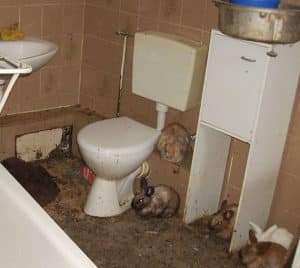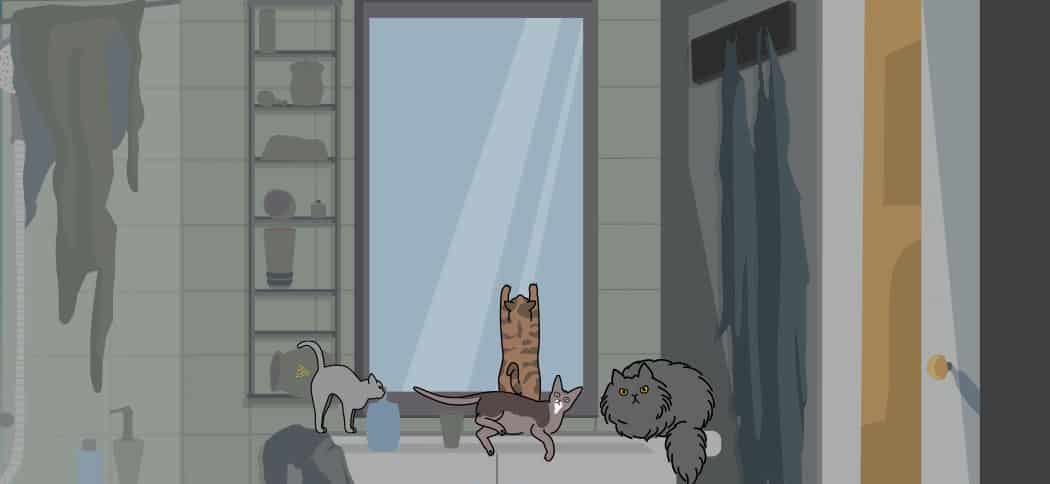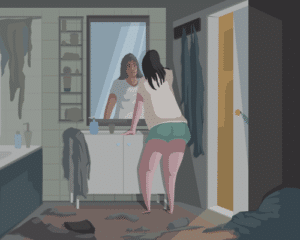Key-Points
Worst PA Animal Hoarding Cleanup
How Many Animals Is Too Much?
Why Do People Hoard Animals?
Professional Cleanups Are Required

We have all heard the hoarding stories in which the mummified remains of poor Fluffy or Rex or Budgie were found underneath a collapsed tower of Reader's Digests or suffocated inside a broken refrigerator full of urine-filled detergent bottles. Sometimes, sadly, the pet owner's own body is found in a bathtub beneath a tumulus of heart-shaped Valentine's Day chocolate boxes.
We are the crews called to clean up after animal hoarding, rooting through dangerous tunnels of soiled laundry stacks only to emerge into a cave of aluminum cans and discover a rotting body. We have undergone hours of certification and training to expose ourselves to these situations. These situations attract dangerous bacteria, pathogens, and biohazards not visible to the naked eye.
The Worst Animal Hoarding Cleanup in Pennsylvania
Imagine the stench. One of the most extreme animal hoarding cases involved the removal of over 250 animals from properties in Macungie, Pennsylvania and Upper Hanover, Pennsylvania. These were not stables nor shelters but houses.

These situations require professional intervention using appropriate PPE, cleaning supplies, and remediation equipment.
The variety of animals kept there far exceeded dogs, cats, and birds. There were guinea pigs, ferrets, even skunks. The range of reptiles included turtles, snakes, tortoises, even gators. Even the Montgomery County officials and Lehigh County SPCA described it as the worst case of animal hoarding they had seen.
Cages were stacked on one another. The bathtubs were full of animals. Many animals were being kept in Tupperware bins stacked over four feet high. Some were dead.
It happens more than you’d want to think. Eight percent of animal hoarders own dead or dying or seriously diseased animals. It's estimated to impact 3,500 hoarders and 250,000 hoarded animals.
As of 2022, per APPA, around 70% of US families keep pets, meaning most of us have pets. And since hoarding is something we all do to a certain extent, when is it considered a problem?
How Many Animals is Considered “Hoarding”?
It really depends on where you live in the world. For example, Hawaii has penal laws that clearly outline an offense if the person owns 15 pets and fails to provide “necessary sustenance” for them (basic needs and a safe environment). Illinois also has a similar stature outlining the accumulation of pets (no specific amount) and other municipalities have ordinances similar to above.
Where laws are not concerned, a biohazard situation is usually when the pet owner has more animals than they can care for. More severe cases include collections of pet carcasses. A specific amount of animals does not matter when dangerous living conditions and other health hazards are present.
In a clinical setting, a professionally trained therapist assesses how a person reacts to lessening their hoard. Unusual or extreme reactions are used to determine a problem.
Case Study: The Distressed Beagle Hoarder
This beagle owner is a perfect example. A beagle owner threatened suicide when his 65 beagles were taken from him. An animal hoarder from Hanover, Pennsylvania tried to run over the West Manheim Township SPCA official rescuing dogs from her condemned home. Officials were waiving 106 felony and misdemeanor counts of animal cruelty in a deal to remand her to the county's mental health treatment court.
What are the triggers for animal hoarding and how is it similar to or significantly different from other forms of hoarding? There’s a lot of overlap and there’s no clear answer, still, but it is interesting that animal hoarders make up less than half of all other hoarders.
Why Do People Hoard Animals?
It’s usually due to a serious medical issue, such as:
- Clinical Depression: the person has no energy or inclination to deal with the mess
In 2020, a Brazilian university found 36% animal hoarders of their sample size had also been diagnosed with clinical depression.
- PTSD: the person may have suffered neglect and malnutrition as a child and therefore hoard food
- OCD: the person may feel compelled to own every single NFL team hat or beanie baby
- Alzheimer's: the person becomes cognitively unable to care for themselves
- Senior Squalor/Diogenes Syndrome: person physically unable to attend to activities of daily living (ADLs)
- Addiction: the person comes to care only about the drug of choice to the exclusion of daily life
Final Note on Causes of Noah Syndrome
Animal hoarding, also known as Noah Syndrome, is often triggered by trauma or loss. Suppose someone lost their spouse of many years. They may try to compensate with animal companions, but the strategy does not work, causing them to double down on more and more animal companions.
Isolation can also cause the same process without an inciting incident of trauma or loss. Exposure seems to play a role. An estimated 50 to 80% of animal hoarders grew up in an environment where first degree relatives exhibited some degree of hoarding or proto-hoarding behavior.
Lately, there is a "Rescuer Syndrome" driving new cases as well. People on social media pressure others to adopt and save animals. Many animal hoarders are isolated and spend a lot of time on social media. Therefore, they are reinforced in acquiring animals through this medium.
Typically, in hoarding cases that involve animals, the focus is on animal welfare. In the earlier case study, the officials used the word "hoarding" in connection with the owner of the properties. As it turns out, he had been convicted of animal cruelty as a breeder a decade prior. But not all cases involve intentional financial incentives or welfare violations.
If you or someone you know is in a similar situation, no matter how less extreme you may think it is, it is still too dangerous to attempt to clean yourself.
How to Clean Up After Animal Hoarding
Read more on what happens when you attempt these cleanups yourself. We're here so you don't have to risk exposing yourself. If you suspect your tenant, mom, family member, or maybe even yourself is facing a hoarding problem, we're here to help.
Give our discrete, nonjudgmental 24/7 hotline a call any day, any time for immediate assistance. And your homeowners/renters/property insurance company will most likely pay any animal hoarding cleanup costs.
Share this Post

